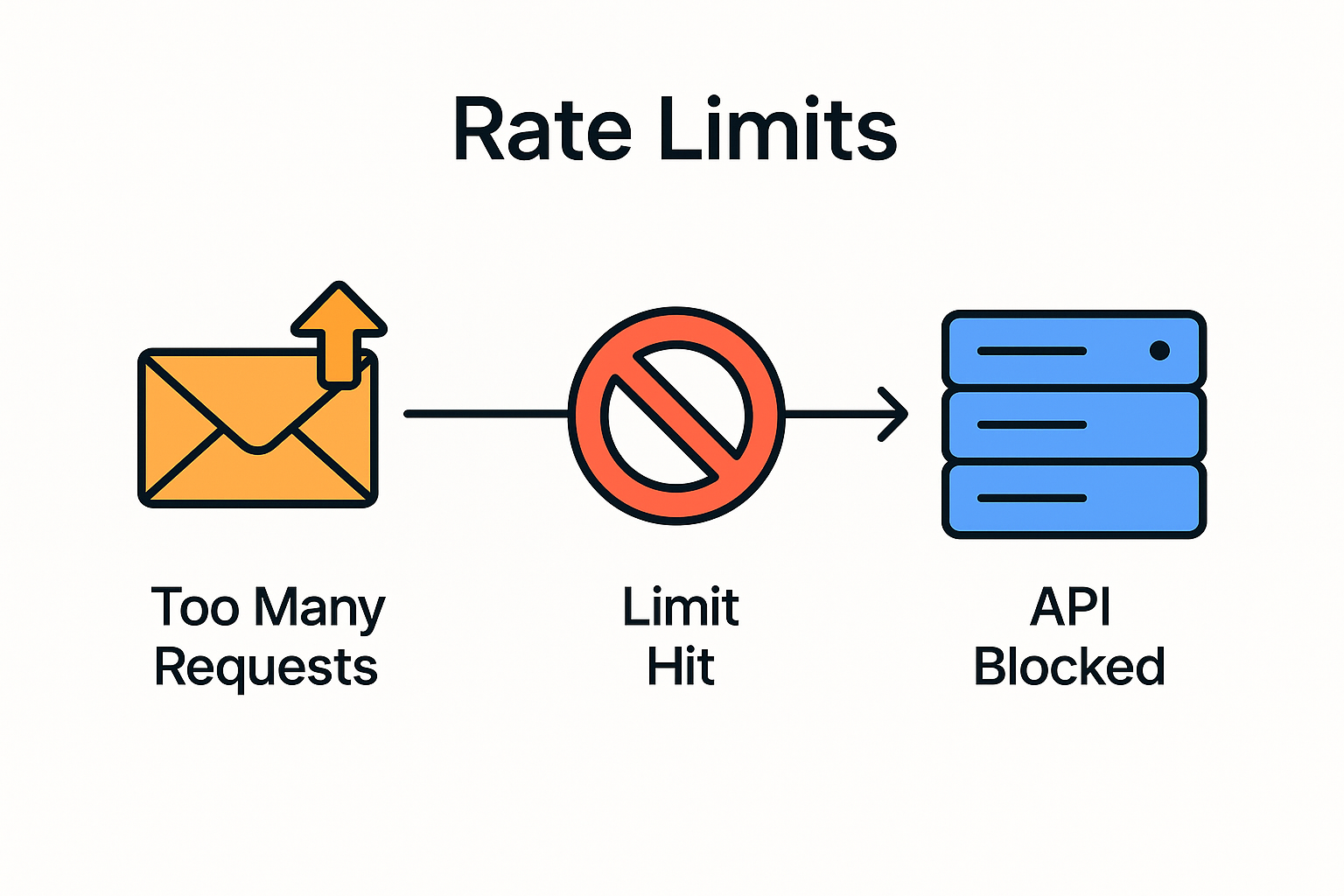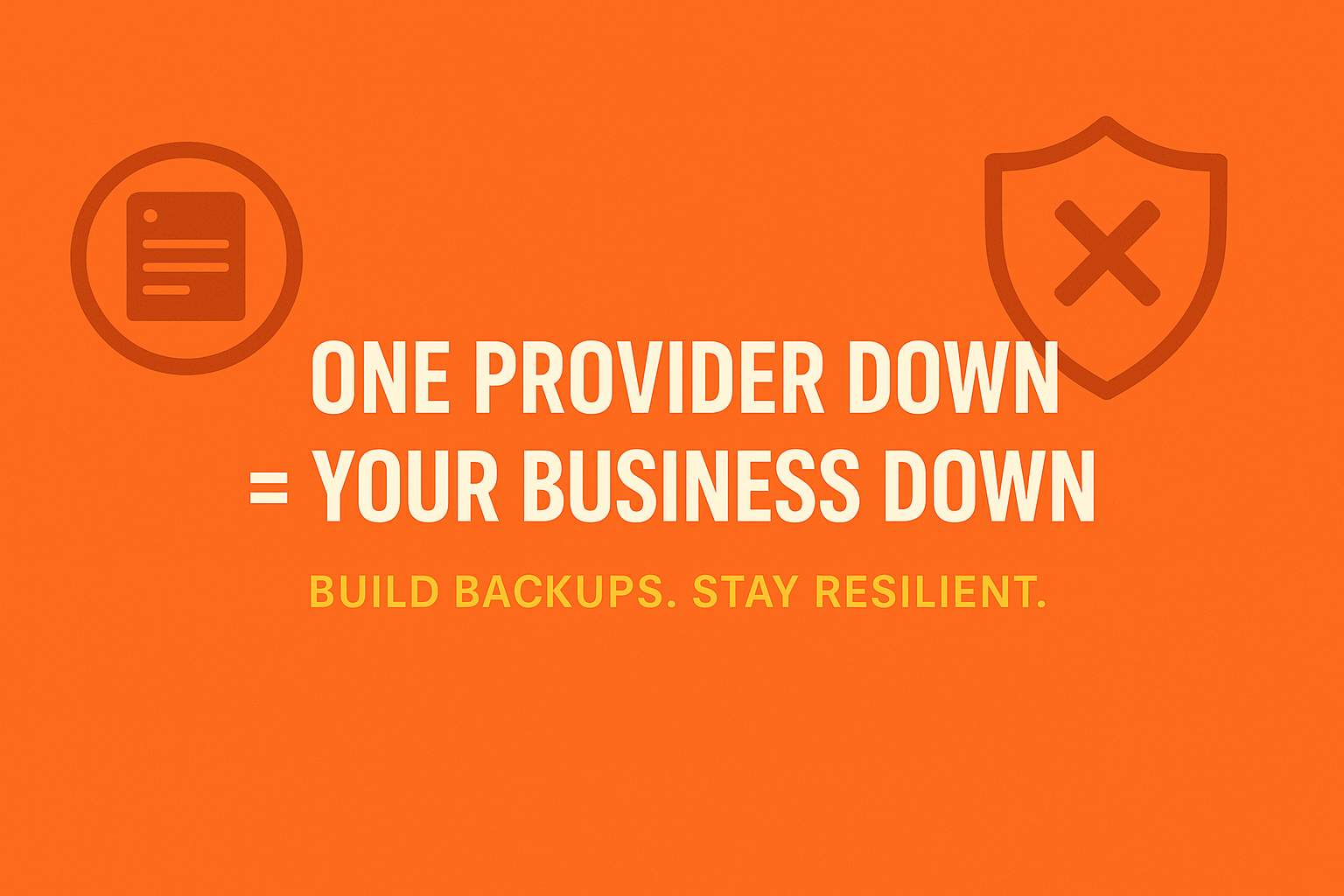When your app suddenly becomes slow, freezes, or stops loading data, most teams immediately point fingers at the backend infrastructure. But here’s the truth: one of the most common reasons apps break isn’t slow servers—it’s API rate limits.
🛠️ What Are Rate Limits?
Rate limits define how many API requests a user, application, or IP address can send within a specific time window. Think of them as traffic control for your API endpoints.
Common examples include:
- 100 requests per minute
- 10 requests per second
- 1,000 requests per day
When your application exceeds the allowed limit, the server automatically rejects additional requests—often without warning.
📌Example
Consider your app’s “Home Feed” that calls an API every time a user opens the app. If 1,000 users simultaneously launch your app, and your rate limit is 500 requests per second, roughly half of those users will be blocked until the next time window begins.
🎯 Why Do APIs Use Rate Limits?
Rate limits exist to protect system performance and ensure fair resource allocation. They prevent:
✓ Traffic overload — Sudden spikes during flash sales, product launches, or viral moments can overwhelm servers.
✓ Bot or script attacks — Malicious scripts sending thousands of requests per second to exploit vulnerabilities or scrape data.
✓ Increased infrastructure costs — More requests mean more compute power, which translates to higher operational expenses.
✓ DDoS-like behavior — Even unintentional, such as a mobile app configured to refresh data every second.
Rate limits ensure APIs remain stable, responsive, and accessible for all users.
🚨 What Happens When Rate Limits Are Hit?
When you exceed rate limits, you’ll typically encounter:
- HTTP 429 – Too Many Requests status code
- API timeouts or significantly delayed responses
- Screens stuck on loading indicators
- Non-functional buttons and interactions
- Data that fails to refresh
🔄 Common Rate Limiting Algorithms
API rate limiting isn’t one-size-fits-all. Different APIs implement different strategies for controlling request flow. Understanding these algorithms helps you design better integrations and troubleshoot issues more effectively.
1️⃣ Fixed Window Limiting
The most straightforward approach. It limits requests within fixed time intervals.
How it works: You can make 100 requests per hour. Once you hit that limit, all additional requests are rejected until the next hour begins.
2️⃣ Sliding Window Limiting
A more sophisticated approach that applies limits to a rolling time period.
How it works: You can make 100 requests in any 60-minute period. The system tracks requests over the most recent 60 minutes continuously, not in fixed blocks.
3️⃣ Leaky Bucket Algorithm
Models rate limiting as a bucket with a hole at the bottom.
How it works:
- Incoming requests fill the bucket
- Requests “leak” out at a constant rate (processed at steady intervals)
- If the bucket overflows, new requests are denied
- Bucket has a maximum capacity
Example:
- Bucket capacity: 100 requests
- Leak rate: 10 requests per second
- If 50 requests arrive in 1 second, they’re queued
- System processes them at 10/second, taking 5 seconds total
- If 150 requests arrive instantly, 50 are rejected
4️⃣ Token Bucket Algorithm
Uses tokens that regenerate over time to control request rates.
How it works:
- A bucket holds tokens (capacity: e.g., 100 tokens)
- Tokens are added at a fixed rate (e.g., 10 tokens per second)
- Each request consumes 1 token
- If no tokens available, request is rejected
- Bucket can fill to maximum capacity when idle
🧰 How to Handle Rate Limits Properly
✔ 1. Implement Local Caching
Store API responses locally so screens don’t repeatedly request the same data. Use appropriate cache invalidation strategies based on data freshness requirements.
✔ 2. Debounce User Inputs
Collect all keystrokes within a defined window (typically 300-500ms) and send a single API request.
Example: Typing “weather” should trigger one request, not seven separate calls.
✔ 3. Exponential Backoff for Retries
When a request fails, implement progressive delays before retrying:
1s → 2s → 4s → 8s
This prevents overwhelming the API during recovery periods and gives the server time to stabilize.
✔ 4. Request Incremental Updates
Send only changed data or use timestamp-based queries instead of requesting complete datasets.
Example: Instead of calling /get-all-notifications, use /get-new-notifications?after=timestamp.
✔ 5. Queue Background Requests
Implement request queuing for non-urgent operations like uploading files, syncing logs, or backing up fitness data.
✔ 6. Strategic Data Preloading
Load frequently accessed data during user login so subsequent screens don’t need to make redundant API calls.
🧠 Key Takeaways
- Rate limits are API protection mechanisms, not backend performance issues
- Applications must be designed with intelligent request management from the start
- Caching, debouncing, exponential backoff, and request queuing prevent rate limit violations
- Reviewing rate limit logs often reveals the root cause of “mysterious” app failures
- Proper rate limit handling delivers: ✔ Faster application performance ✔ Fewer runtime errors ✔ Superior user experience ✔ Reduced infrastructure costs
When your app experiences issues, always ask: “Are we hitting a rate limit?”
Understanding and respecting rate limits isn’t just about avoiding errors—it’s about building robust, scalable applications that provide consistent experiences for all users.
Jump into our new LinkedIn thread on — API Rate Limits: The Silent Rule That Controls Every API
Also, read our last article: OAuth vs JWT: When to Use Each






Leave a Reply
You must be logged in to post a comment.